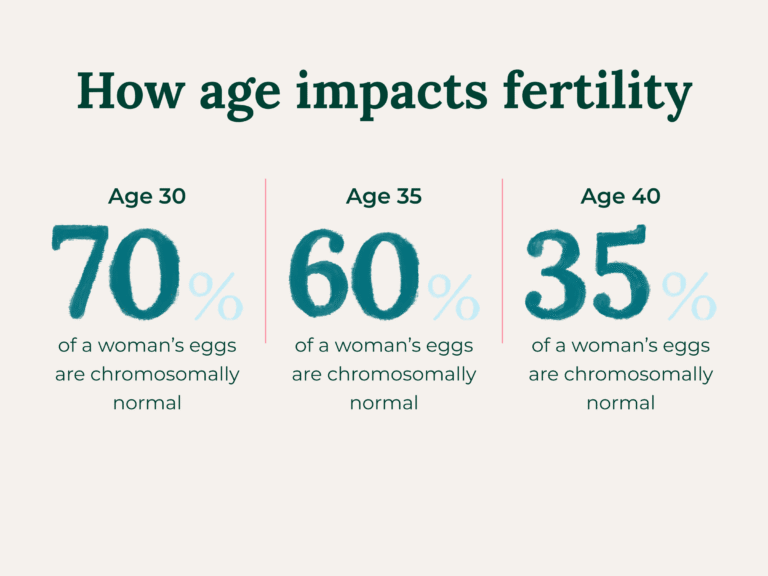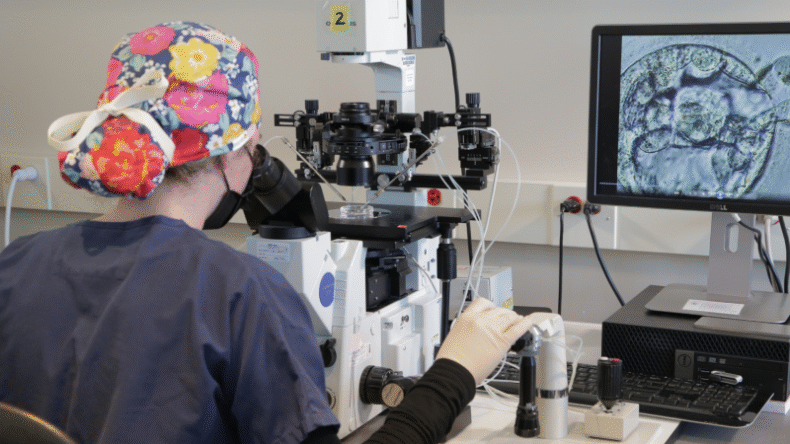A groundbreaking procedure in reproductive medicine, preimplantation genetic testing (PGT), screens embryos for genetic abnormalities before uterine transfer and has transformed the journey for individuals and couples building their families through in vitro fertilization (IVF). CCRM Fertility has been at the forefront of this science and research, achieving the world’s first clinical case of PGT-A (preimplantation genetic testing for aneuploidy) back in 2007 involving the screening of all 23 pairs of embryonic chromosomes with a frozen euploid blastocyst transfer.
Now, almost twenty years later, CCRM’s Genetics team continues to innovate and prove just how valuable PGT-A is for those building their families through IVF. Mandy Katz-Jaffe, PhD, reproductive geneticist and Scientific and Genetics Director at CCRM Fertility, and her team continue to explore the valuable contribution PGT-A provides to embryo health and reproductive success. Most recently, Dr. Katz-Jaffe and her co-authors published an Intent to Treat clinical study conducted at CCRM’s flagship location in Lone Tree, Colorado, that examined how the embryo selection method impacts the likelihood of establishing a healthy pregnancy and live birth outcome.
The study titled “Impact of aneuploidy on reproductive success in young infertile women: prospective analysis” was published in Reproductive BioMedicine Online in 2024. Their groundbreaking research, Intent to Treat clinical study, which they presented at the 2025 Leaders in Fertility Conference, is proof that for women trying to conceive for the first time live birth rates increase and miscarriage rates decrease when using PGT-A as the method of embryo selection in contrast to standard embryo grading.
Read on to find out what PGT-A is, how it can contribute to reproductive success, and what your patients should know about CCRM’s research as you refer them to us to build their family through assisted reproductive technologies (ART).
What is preimplantation genetic testing for aneuploidy (PGT-A)?
Preimplantation genetic testing for aneuploidy is a procedure where embryos created through IVF are screened for chromosomal abnormalities. Normal, or euploid, embryos contain 46 chromosomes, 23 from the egg and 23 from the sperm. Any embryo with an abnormal number of chromosomes is typically considered to be aneuploid and not viable for reproductive success.
What is the goal of PGT-A?
PGT-A enables the selection of chromosomally normal embryos for transfer, thereby increasing the probability of reproductive success. This reduces the likelihood of implantation failure, miscarriage, and aneuploid conceptions, and gives your patients the best chance of a healthy pregnancy and baby.
How does age impact embryo development?
As a woman ages, both the quantity and quality of the eggs decrease. This means it’s more difficult to get a euploid embryo because there are fewer normal eggs available, if the egg is chromosomally abnormal, the embryo that is created will be too.

How is PGT-A performed in IVF?
When fertilized eggs reach the blastocyst stage, typically 5 or 6 days after fertilization, an embryologist meticulously removes a few trophectoderm (pre-placental) cells from the embryo, which are then PGT tested. The embryos themselves are frozen at the local CCRM IVF lab while the patient awaits their PGT results.
At CCRM, all our PGT-A testing is performed in-network at our proprietary CCRM Genetics lab rather than through a third-party lab.
The CCRM study compared two embryo selection methods and their effect on reproductive success, a decision made by the IVF physician at the first patient consult. The Intent to Treat clinical study featured two patient groups with 100 maternally age-matched women in each:
1. Group A, who selected their embryo for transfer based on morphology (what the embryo grade looks like under the microscope)
2. Group B, who selected their embryo for transfer based on PGT-A results
Across the patients in the two groups, there were no significant differences in ovarian reserve, number of eggs retrieved and fertilized, blastocyst development, or the quality of the blastocyst transferred. The women in both groups were age-matched with a mean age of 32.6 years old.
Takeaways from CCRM’s embryo selection study
· Implantation rates and live birth rates were higher and miscarriage rates were lower in women whose embryo for transfer was chosen by PGT-A at their first attempt of conception, compared to standard embryo morphology.
o Group A had a 53.4 % live birth rate per initial physician IVF consult, compared to a 76.7 % live birth rate for Group B.
o In Group B, the PGT-A group, 23 additional women reached live birth from the first consult with their reproductive endocrinologist (REI). Interestingly, 17 of these women would’ve transferred an aneuploid embryo if they had chosen their embryo based on morphology alone.
· This was true even for younger infertile women (under the age of 35)
· Live birth rates were higher for women who made the clinical decision upfront (during their first consultation with their fertility doctor) to use PGT-A as their embryo selection method
What does this mean for IVF patients?
When you refer your patient to CCRM and they meet with their medical provider at the initial fertility consultation, they should be sure to ask about PGT-A as the method of embryo selection. Our research shows that even for women younger than 35, selecting embryos based on PGT-A is the fastest road to baby because it’s the best way to reduce the risk of transferring an aneuploid embryo. Scientific publications show that up to 70% of spontaneous miscarriages are due to a fetus that is aneuploid.
Our priority at CCRM is to help your patients build their families and return them to your care once they achieve pregnancy. We’re dedicated to getting all patients to their family-building goals in as few cycles as possible using personalized protocols, advanced technology, and science and research.
Ready to learn more about how IVF with PGT could help your patients achieve their dreams of parenthood? Click here to book their appointment with CCRM.




